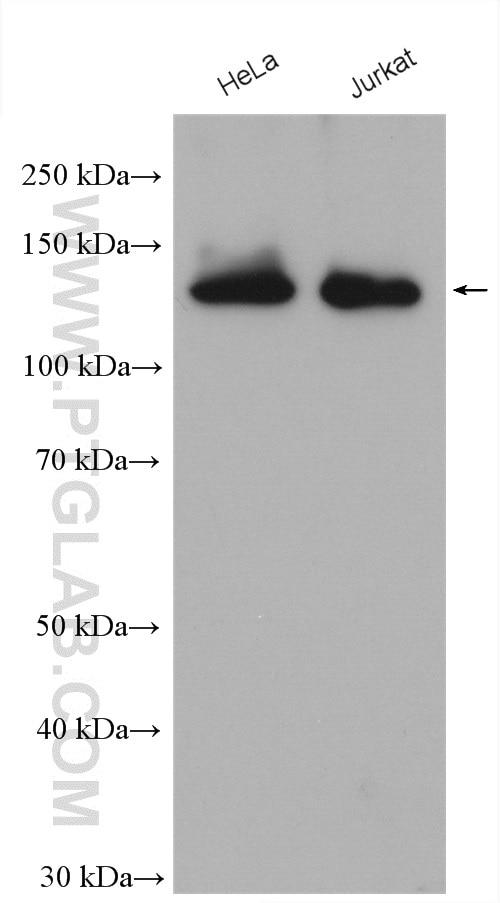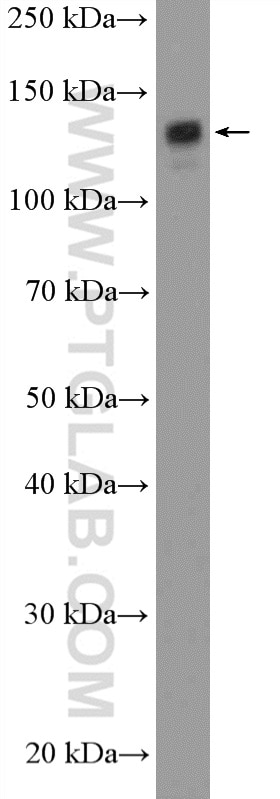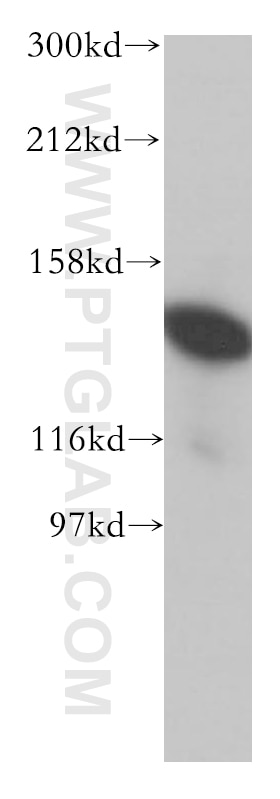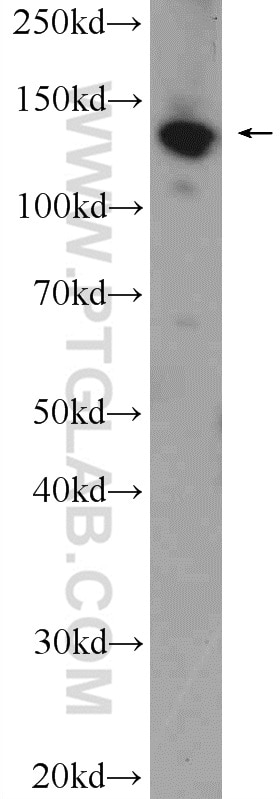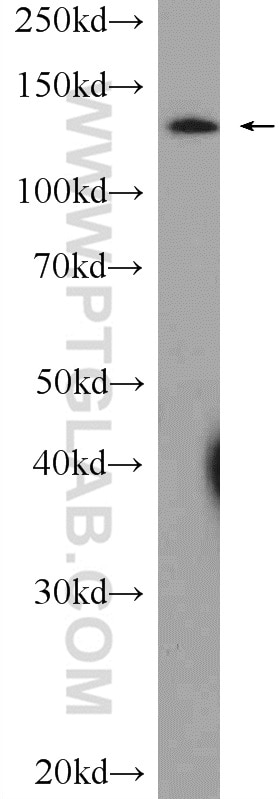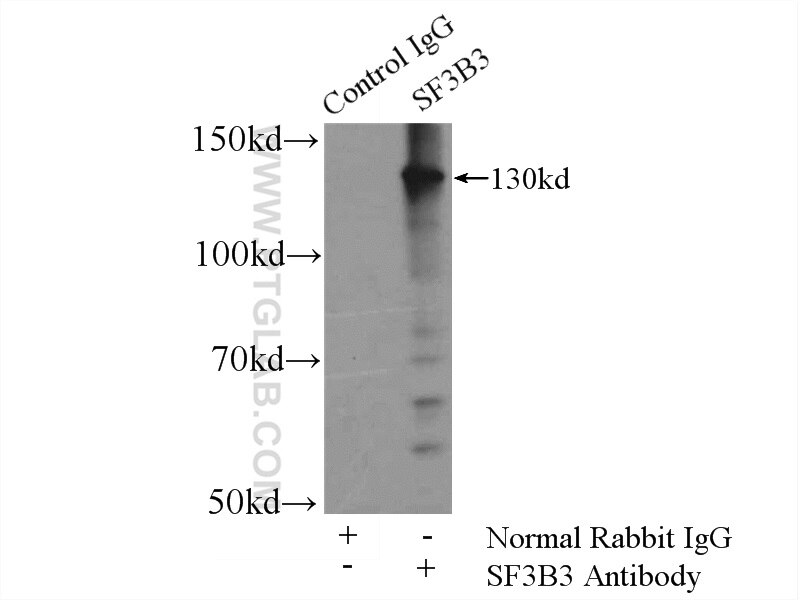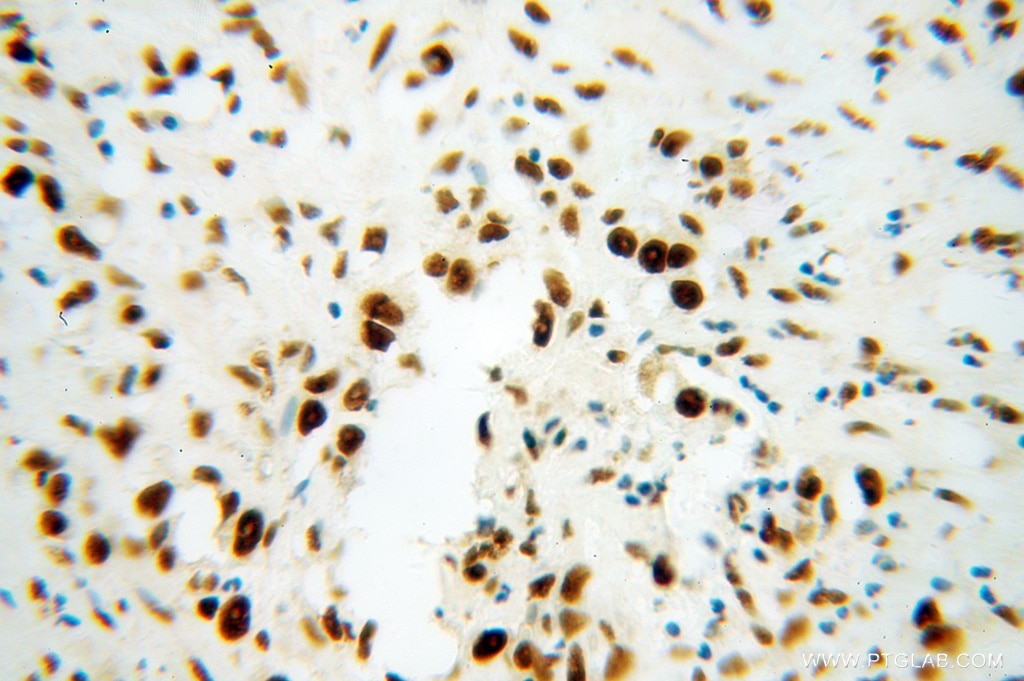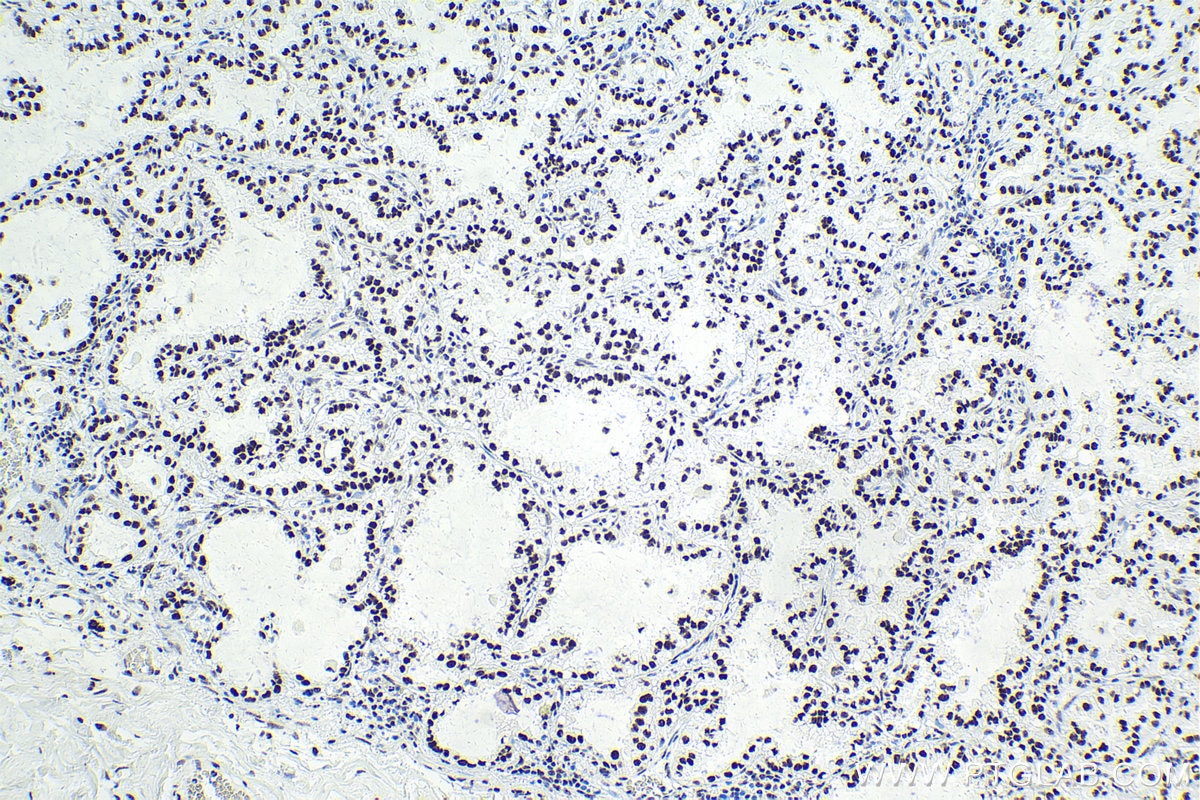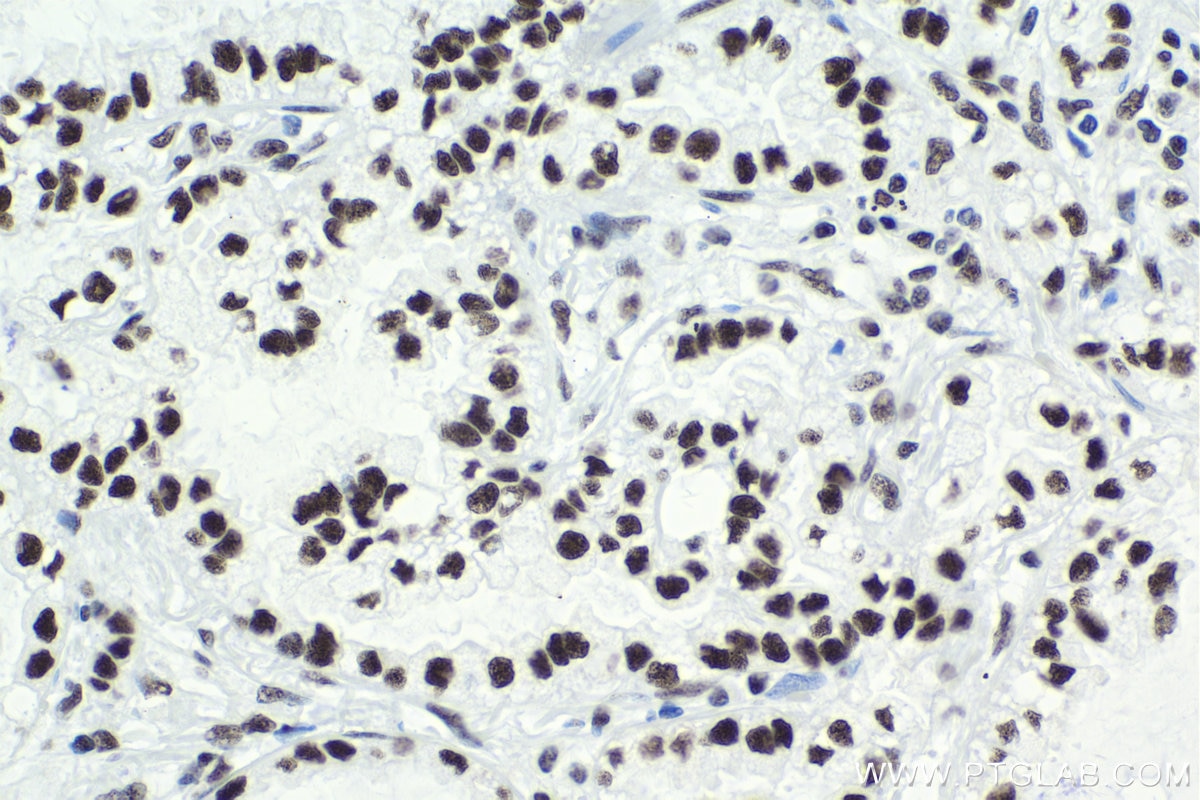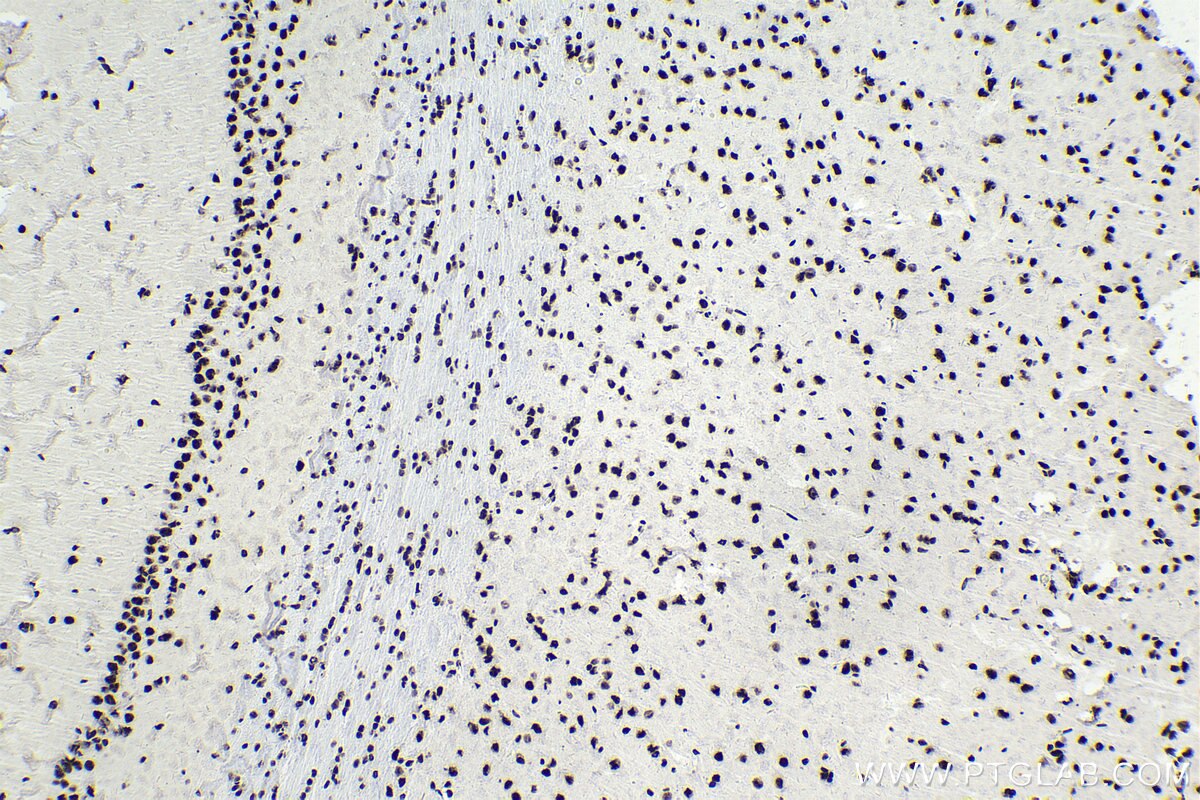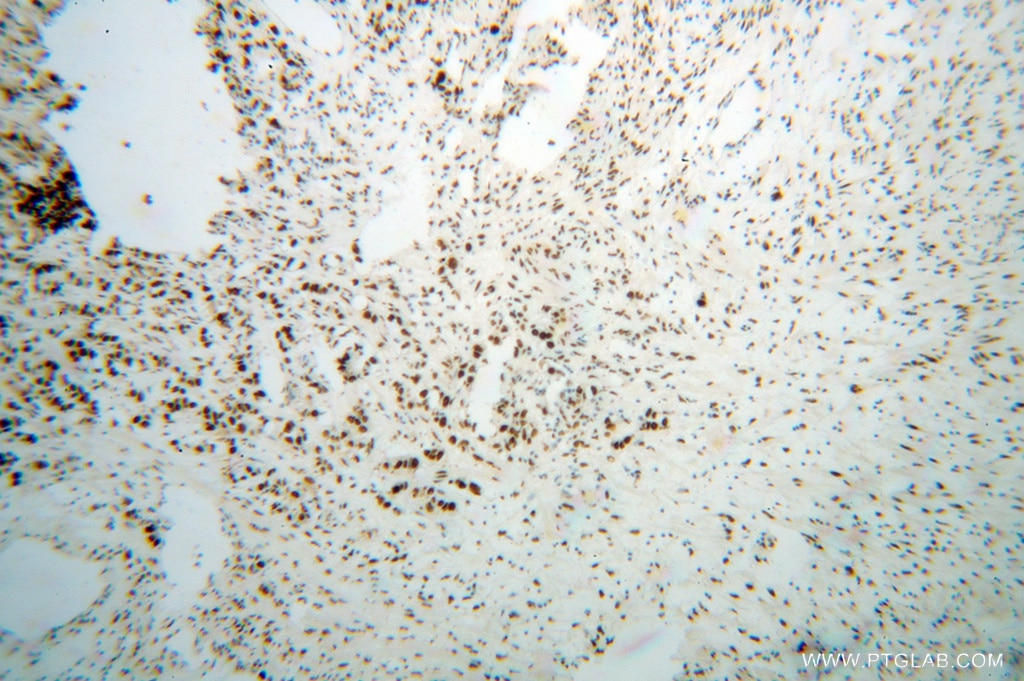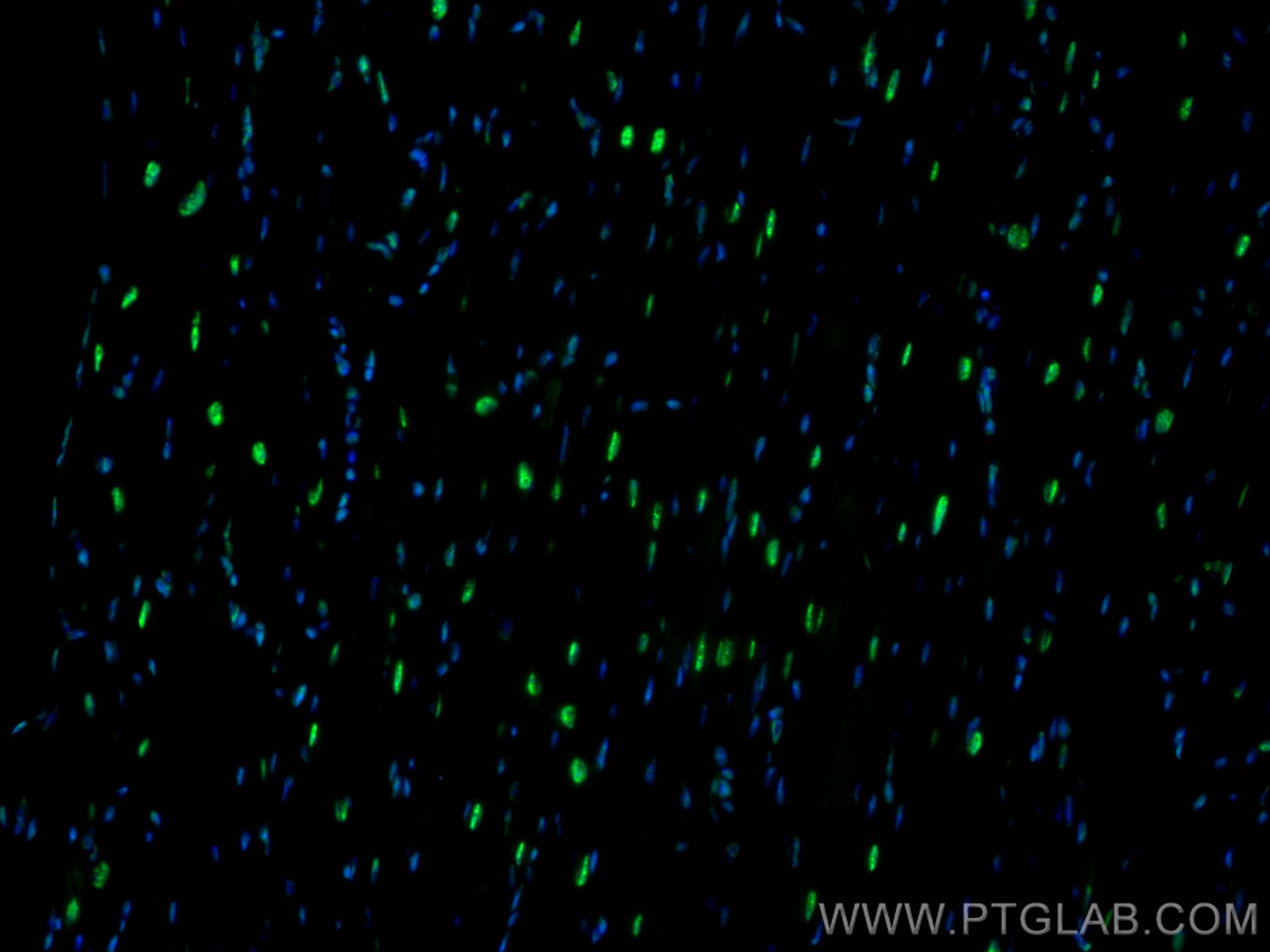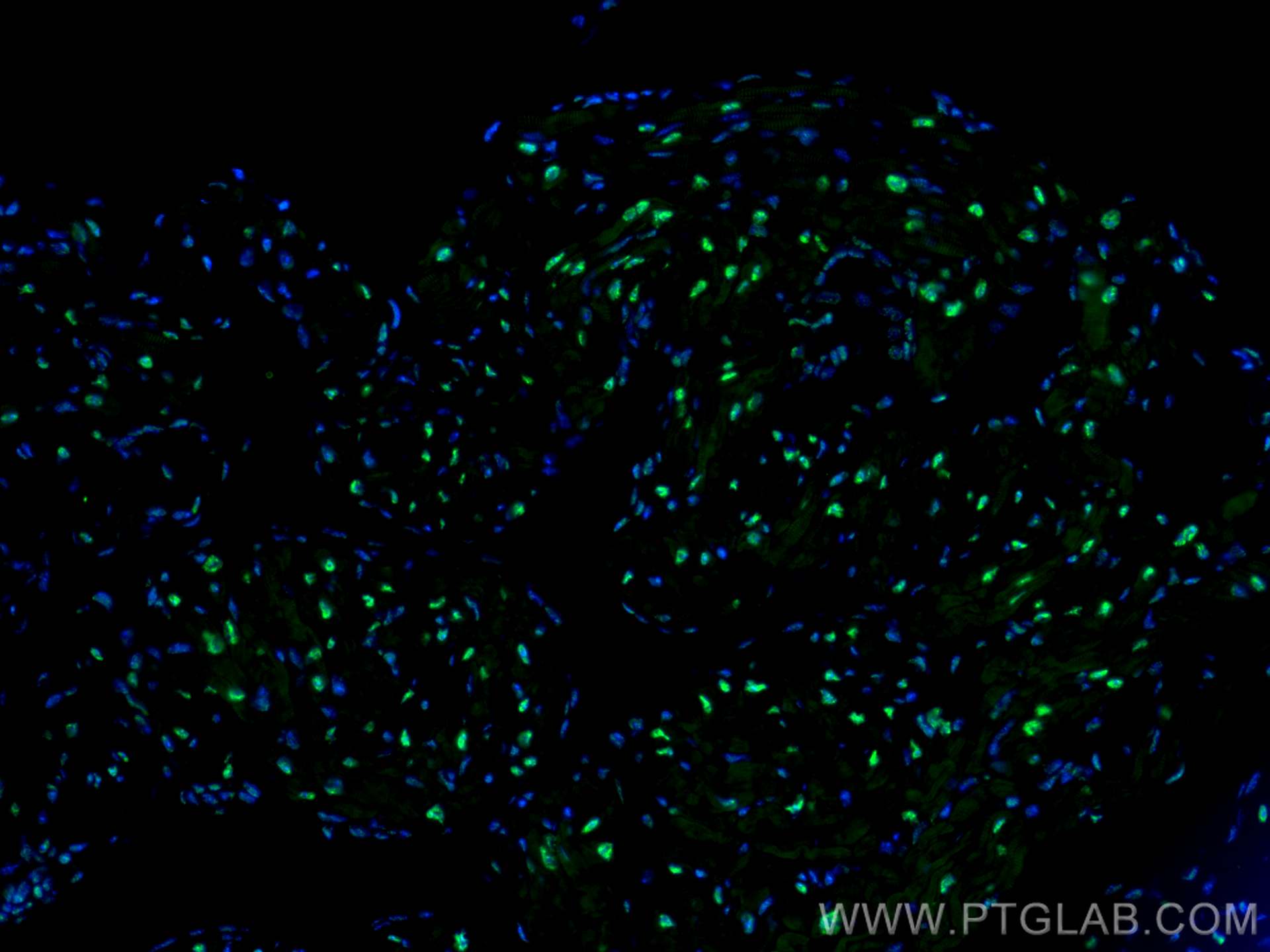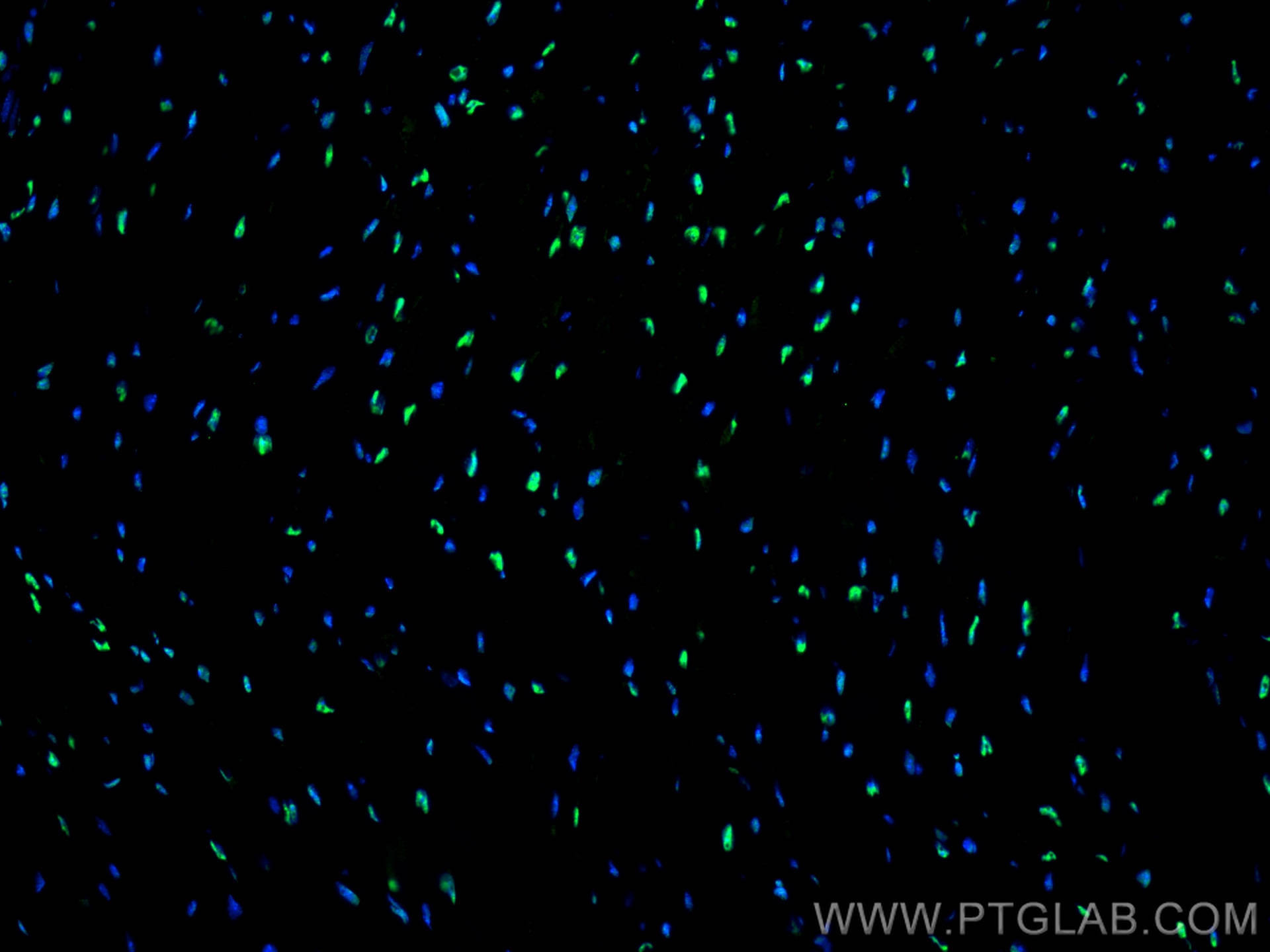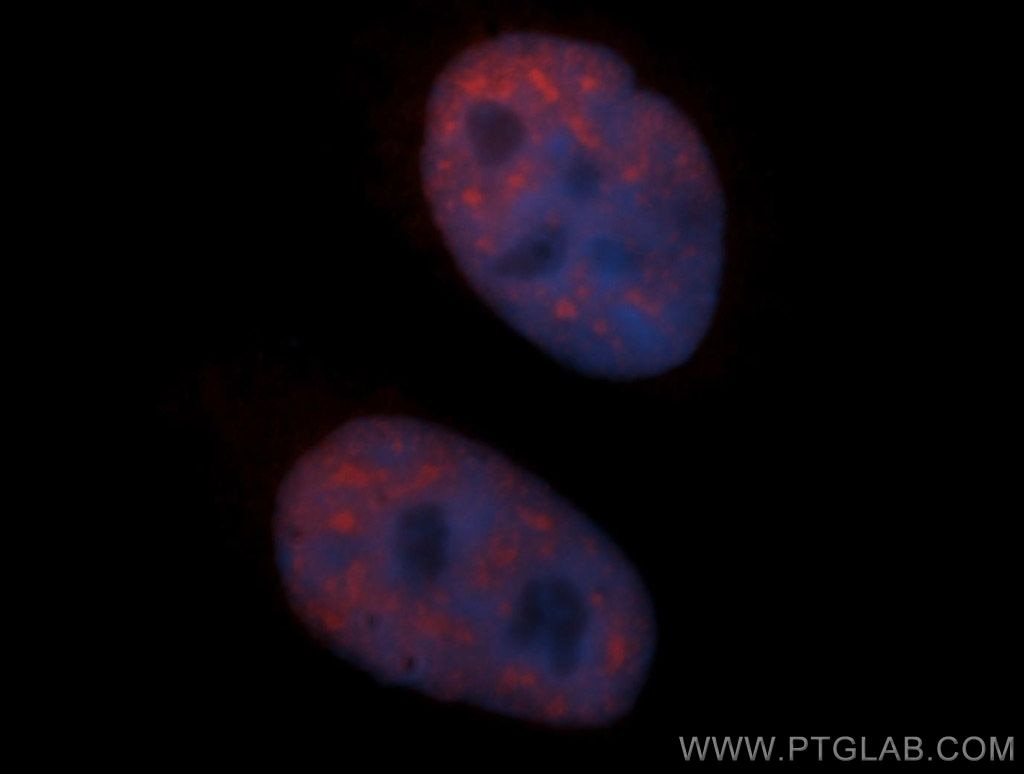Validation Data Gallery
Tested Applications
| Positive WB detected in | Jurkat cells, mouse heart tissue, human brain tissue, rat brain tissue, rat heart tissue, HeLa cells |
| Positive IP detected in | rat brain tissue |
| Positive IHC detected in | human lung cancer tissue, human gliomas tissue, rat brain tissue Note: suggested antigen retrieval with TE buffer pH 9.0; (*) Alternatively, antigen retrieval may be performed with citrate buffer pH 6.0 |
| Positive IF-P detected in | mouse heart tissue |
| Positive IF/ICC detected in | Hela cells |
Recommended dilution
| Application | Dilution |
|---|---|
| Western Blot (WB) | WB : 1:2000-1:12000 |
| Immunoprecipitation (IP) | IP : 0.5-4.0 ug for 1.0-3.0 mg of total protein lysate |
| Immunohistochemistry (IHC) | IHC : 1:2000-1:8000 |
| Immunofluorescence (IF)-P | IF-P : 1:50-1:500 |
| Immunofluorescence (IF)/ICC | IF/ICC : 1:20-1:200 |
| It is recommended that this reagent should be titrated in each testing system to obtain optimal results. | |
| Sample-dependent, Check data in validation data gallery. | |
Published Applications
| WB | See 19 publications below |
| IF | See 2 publications below |
| CoIP | See 1 publications below |
| RIP | See 1 publications below |
Product Information
14577-1-AP targets SF3B3 in WB, IHC, IF/ICC, IF-P, IP, CoIP, RIP, ELISA applications and shows reactivity with human, mouse, rat samples.
| Tested Reactivity | human, mouse, rat |
| Cited Reactivity | human, mouse, rat, pig |
| Host / Isotype | Rabbit / IgG |
| Class | Polyclonal |
| Type | Antibody |
| Immunogen |
CatNo: Ag5980 Product name: Recombinant human SF3B3 protein Source: e coli.-derived, PGEX-4T Tag: GST Domain: 250-399 aa of BC003146 Sequence: EDPTGNKALWDRGLLNGASQKAEVIMNYHVGETVLSLQKTTLIPGGSESLVYTTLSGGIGILVPFTSHEDHDFFQHVEMHLRSEHPPLCGRDHLSFRSYYFPVKNVIDGDLCEQFNSMEPNKQKNVSEELDRTPPEVSKKLEDIRTRYAF 相同性解析による交差性が予測される生物種 |
| Full Name | splicing factor 3b, subunit 3, 130kDa |
| Calculated molecular weight | 136 kDa |
| Observed molecular weight | 130-135 kDa |
| GenBank accession number | BC003146 |
| Gene Symbol | SF3B3 |
| Gene ID (NCBI) | 23450 |
| RRID | AB_2270189 |
| Conjugate | Unconjugated |
| Form | |
| Form | Liquid |
| Purification Method | Antigen affinity purification |
| UNIPROT ID | Q15393 |
| Storage Buffer | PBS with 0.02% sodium azide and 50% glycerol{{ptg:BufferTemp}}7.3 |
| Storage Conditions | Store at -20°C. Stable for one year after shipment. Aliquoting is unnecessary for -20oC storage. |
Background Information
Introns are removed from nuclear pre-mRNA in 2-step transesterification reactions. Splicing occured in a large ribonucleoprotein particle, called the spliceosome. Spliceosomal intermediate complexes form on pre-mRNA in the order E, A, B, and C, with the catalytic reactions occurring in complex C. U2 small nuclear ribonucleoproteins are one of the proteins essential for spliceosome assembly and mRNA splicing. Functional U2 snRNP is composed of a 12S unit and 2 splicing factors, SF3A, which is composed of 3 proteins, and SF3B, which conposed of 4 proteins. SF3B3 is one of SF3B, and it's required for 'A' complex assembly formed by the stable binding of U2 snRNP to the brachpoint sequence(BPS) in pre-mRNA.
Protocols
| Product Specific Protocols | |
|---|---|
| IF protocol for SF3B3 antibody 14577-1-AP | Download protocol |
| IHC protocol for SF3B3 antibody 14577-1-AP | Download protocol |
| IP protocol for SF3B3 antibody 14577-1-AP | Download protocol |
| WB protocol for SF3B3 antibody 14577-1-AP | Download protocol |
| Standard Protocols | |
|---|---|
| Click here to view our Standard Protocols |
Publications
| Species | Application | Title |
|---|---|---|
Gastroenterology Enterotoxigenic Bacteroides fragilis promotes intestinal inflammation and malignancy by inhibiting exosomes-packaged miR-149-3p. | ||
Nat Commun Splicing modulators act at the branch point adenosine binding pocket defined by the PHF5A-SF3b complex. | ||
Nucleic Acids Res Corrigendum to article "Quantitative proteomics reveals that long non-coding RNA MALAT1 interacts with DBC1 to regulate p53 acetylation''. | ||
Mol Neurodegener Nuclear speckle specific hnRNP D-like prevents age- and AD-related cognitive decline by modulating RNA splicing. | ||
Nucleic Acids Res Quantitative proteomics reveals that long non-coding RNA MALAT1 interacts with DBC1 to regulate p53 acetylation. |

